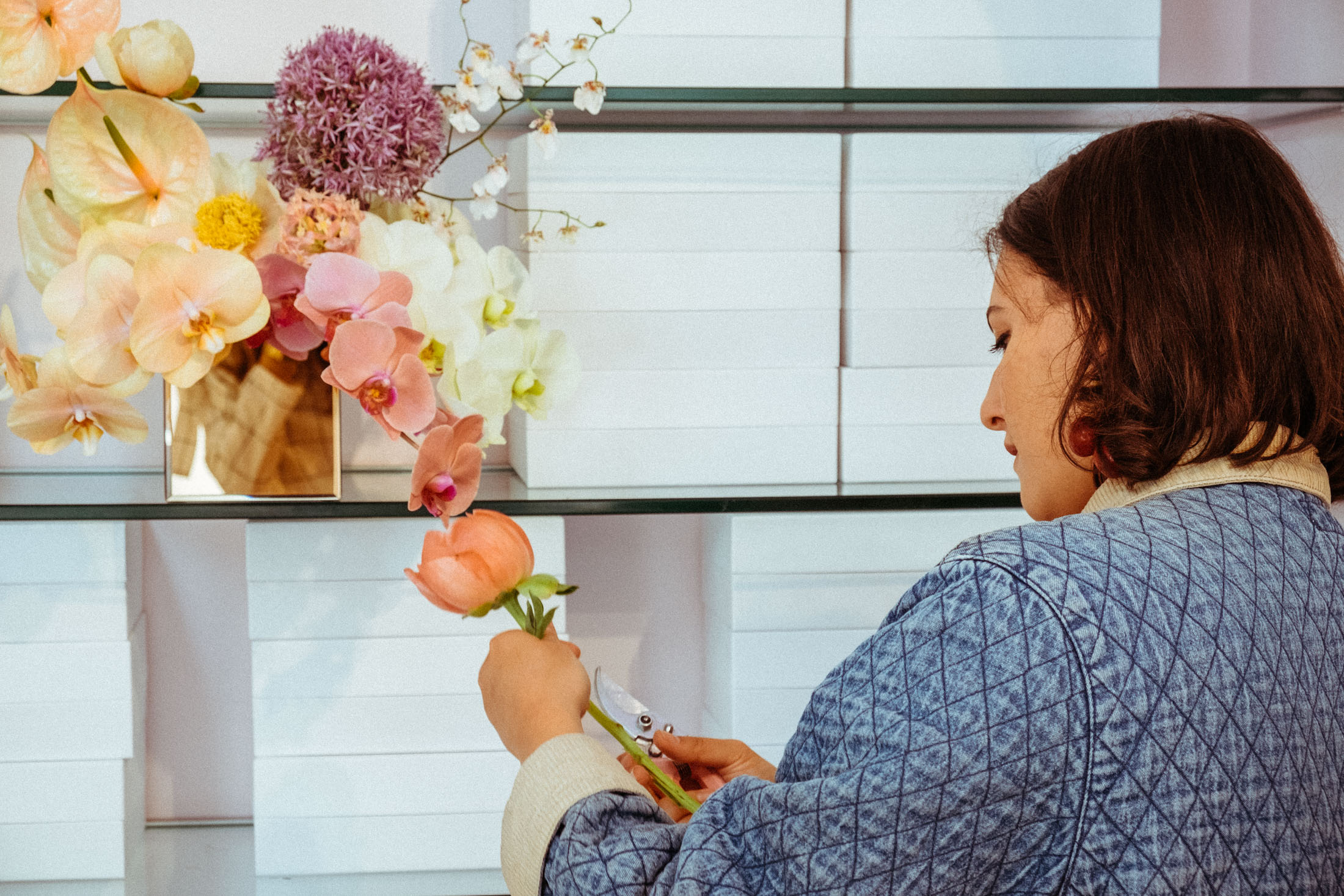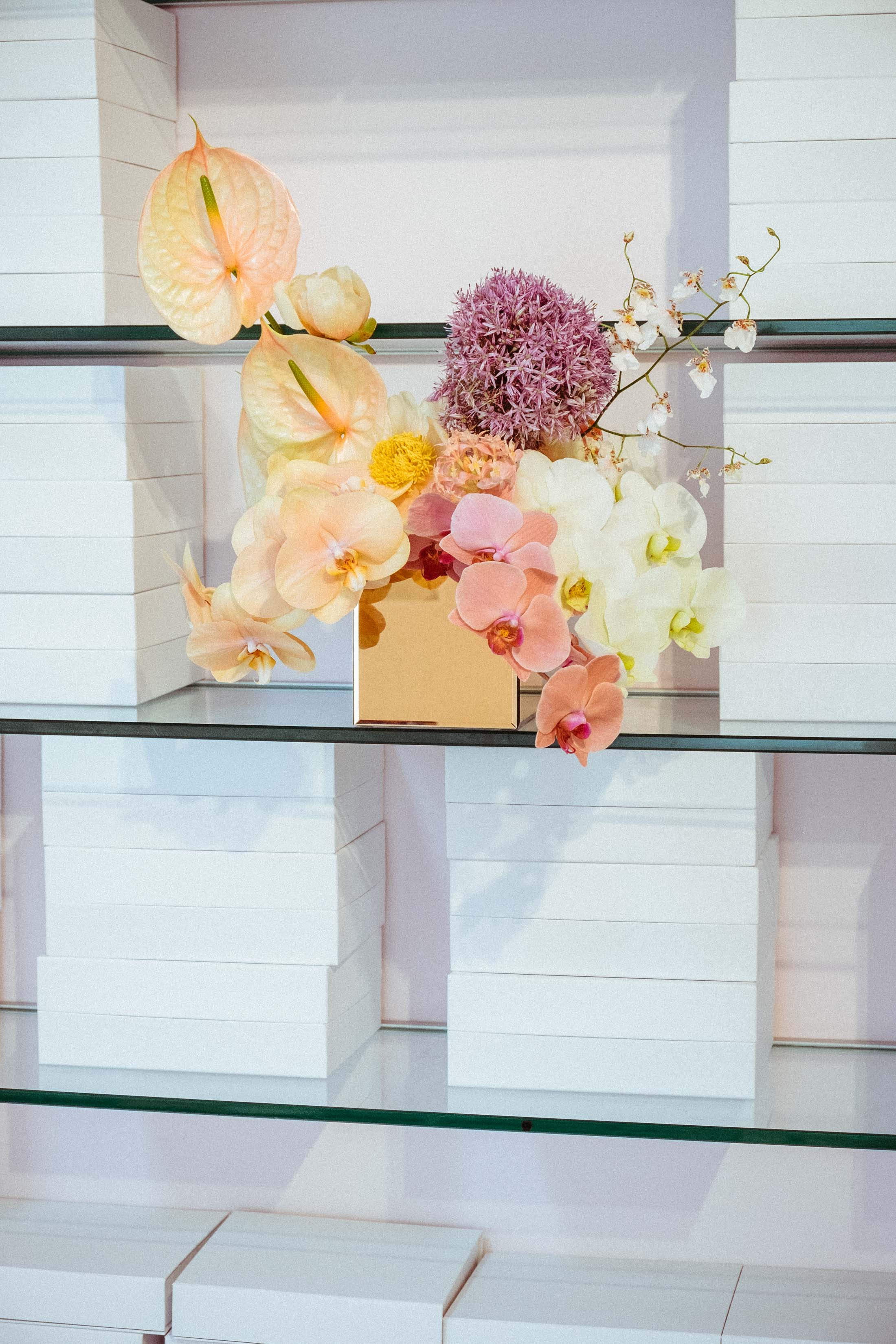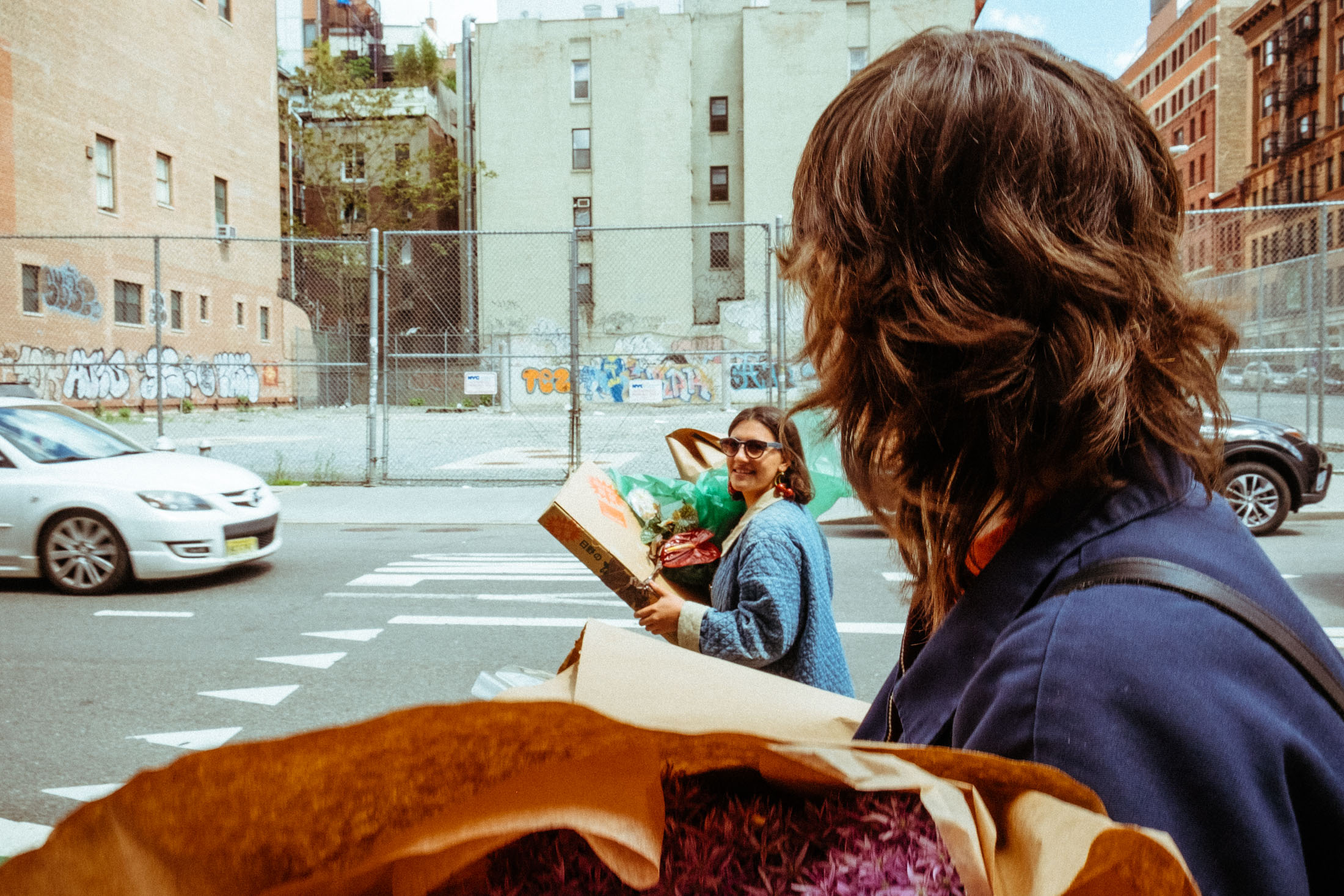I don’t know how I arrived at Brittany’s Instagram profile, but somehow I did. It’s not like her work is in any way obscure. She has amassed an impressive roster of clients and been featured in many publications, like Vogue, to name one. You don’t have to be interested in flowers, either, to “discover” her feed because if you follow Glossier or Mansur Gavriel, for example, you’ve probably seen her work or even tapped on her tag somewhere and reached her account, like I did. But once you get there, you’ll definitely develop that interest. Her work is so breathtaking and unique, it just makes the heart flutter with inspiration. So, when I was planning some content around my latest trip to New York, I thought it would be amazing if I could interview her. Of course, I didn’t really know if she’d agree to it. I’m not exactly Vogue. But to my surprise, she said yes. I met Brittany and her assistant Irie at the flower district on 28th street and tagged along for some flower shopping and two deliveries (one of which was the Glossier showroom!). Brittany is, in many ways, the personification of her flowers—soft-spoken yet confident, vulnerable but resilient. Graceful, rare and warm. Getting to know her a little bit through this interview instilled upon me a greater level of appreciation for her work, as I hope it will do for you too.
A Morning With Brrch Floral’s Brittany Asch
June 5, 2017
IN Lifestyle
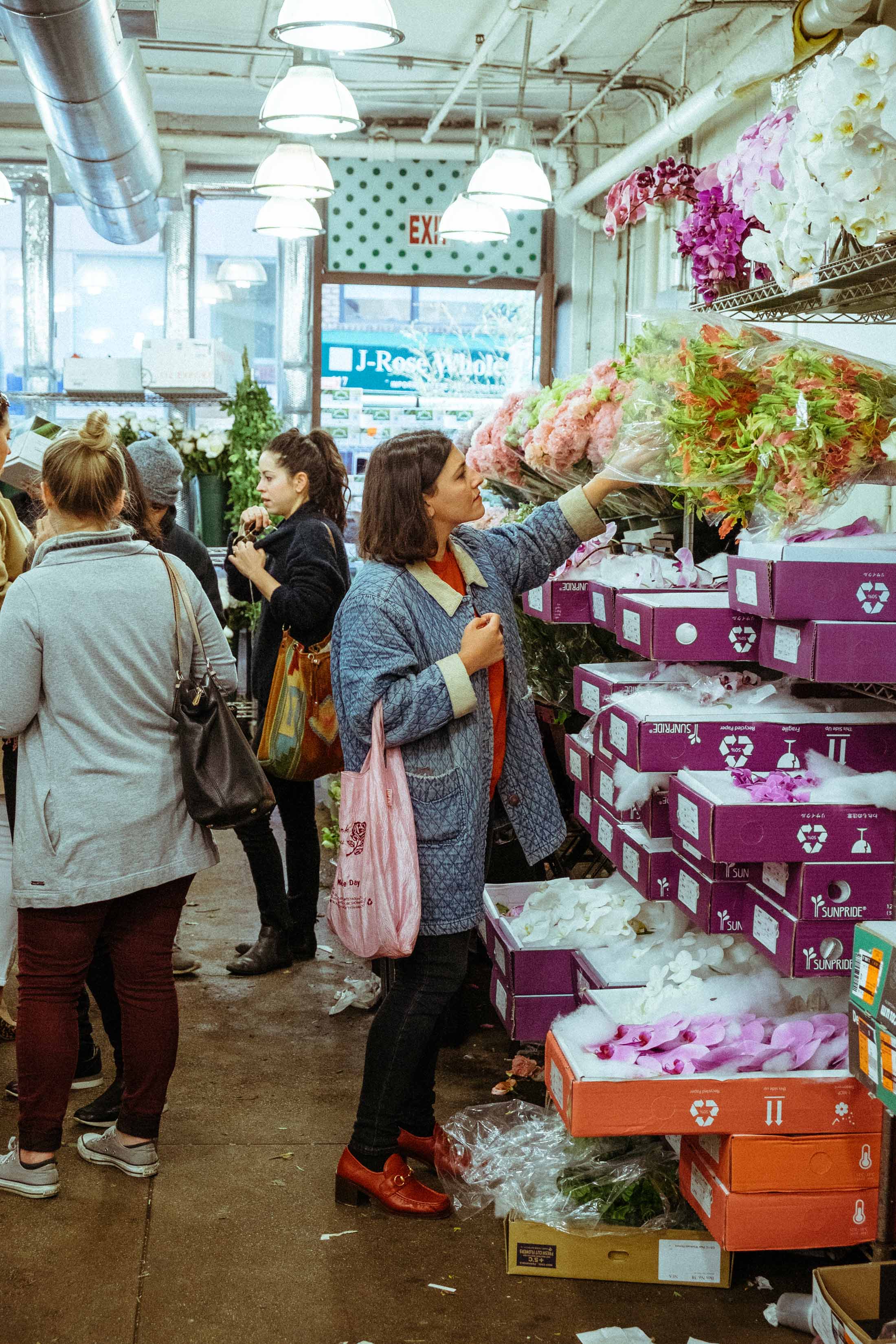
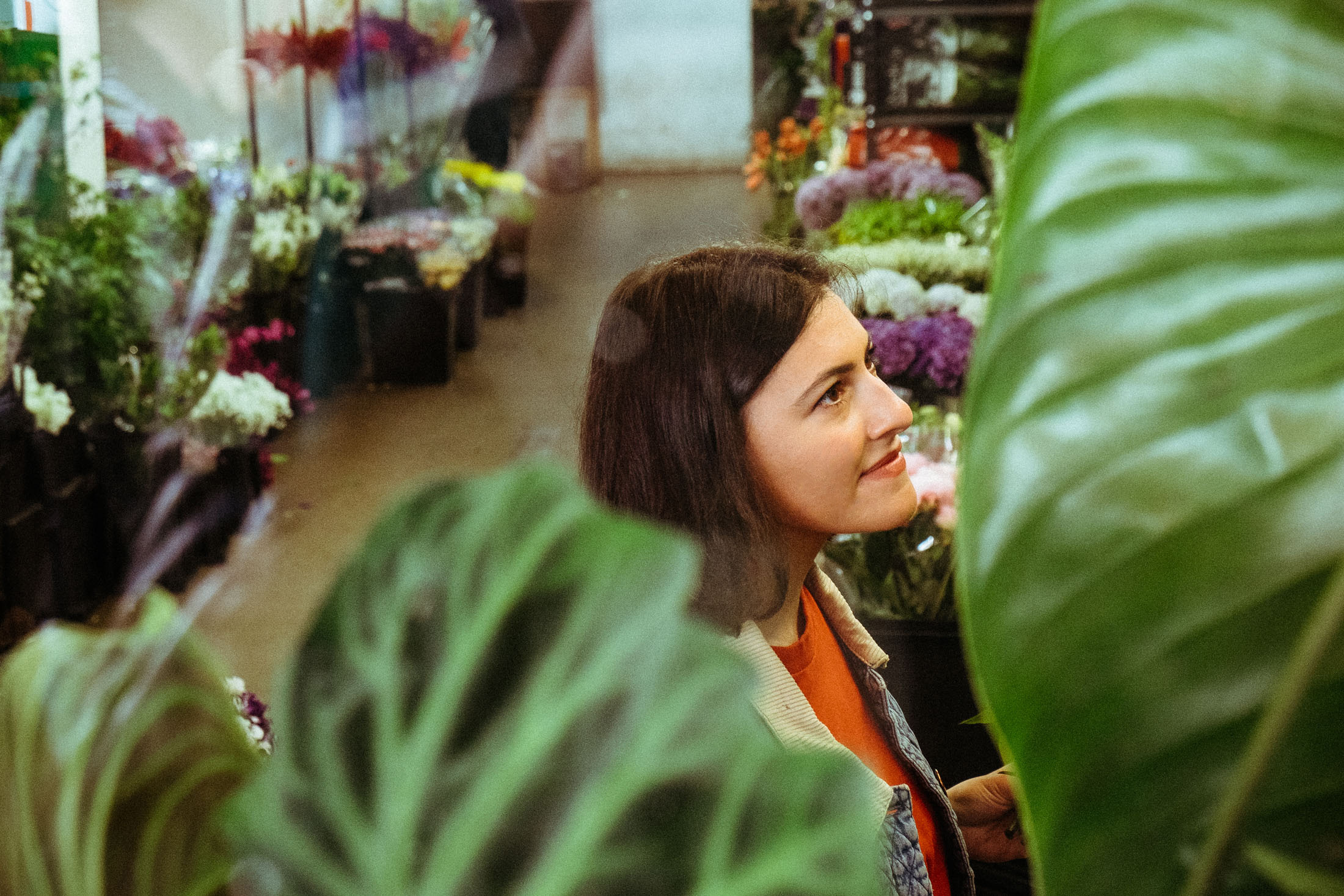
Do you ever say “no” to a client because you know that it’s not for you? Because they’re going to ask you for something you know you’re not going to enjoy doing?
Yes. I’ve worked so much that if I was to take on something that I didn’t love, it would take so much more out of me and I would need so much more recuperation time. When you do something you love—it’s a cliché but—it doesn’t feel like work. It’s really laborious to do something you’re not in love with. I’m just not interested. At this point, I have the luxury where I can say “no”. I didn’t, for so long, so I’m trying to—I’m teaching myself how to say “no”. It’s not a habit that I was used to, and I feel like it is something you have to learn how to do. Because also, when you’re freelance, you’re living pay check to pay check, so you’re like “things are great now but what if they’re not great in six months?” So you get scared to say “no”. Even when I started to just realize and learn that “I have to say no to those things [I don’t like] and other things will come up that I love, and then you’ll be so glad you said ‘no’ to that other project”.
Also, if you say “yes” it takes up your time and you’re sacrificing a project that could make you happy.
Or a part of you that could be reserved energy to work on creating something different and new which is what keeps me going. Just trying to constantly renew the eye, you know? I don’t like getting stuck in the habit of formulas. Even if it looks like I’m—you know, with certain clients I’m using a lot of the same product but I’m trying to do it in a different way each time. It’s like saying “no” to things you don’t align with because in some way or another then other people will align you with those things.
Exactly, you’ll start promoting yourself or selling yourself…
Wrongly! I’ve definitely been asked, “why does your earlier stuff look different?” And I have to explain to them, “well, I had to pay my bills” and everyone was asking me to recreate other people’s work. There was no opportunity for me to do what I wanted to do. In the beginning, I wanted to leave my restaurant job so badly and work with flowers full time that I said yes to literally everything. Even if I was making no money, I was just like, “I have to make this happen”. But the industry is so different now than it was when I was first getting started. There’s much more interesting jobs now and it’s so much further reaching than just weddings.
Artists go through this process where they learn the rules, they apply them, they learn from the masters, and then they break the rules and make their own style. So for me, it wasn’t really like, “oh, she was probably doing stuff she didn’t like”. What I thought, from just looking at those photos [of your previous work] was, “this was probably her in the stage where she was learning and doing all the traditional stuff with the rules of flower arranging”.
I was!
So, I wanted to ask you… I don’t know a lot about it but, from what I know, florists start with foliage. That’s the foundation of a floral arrangement. The first step.
I don’t do that at all but that is what I did for a long time because that’s what I was taught. And I felt like in some ways—and I don’t think it applies for everyone—but I felt like in order for me to break away I first need to understand what I’m breaking away from. And I really wanted to get comfortable and acquainted with all of these other styles before I could go inward. But it definitely tied in to—because I was doing all that before I really started Brrch; just exploring. And then when I started it, that’s when I was taking on whatever job [that came along]. And I was definitely trying to put my own mark on it, but with the understanding that people were paying me to get this [specific] end result. So I was so grateful for Instagram, because then I could show people something that I wanted to do, and luckily it worked!

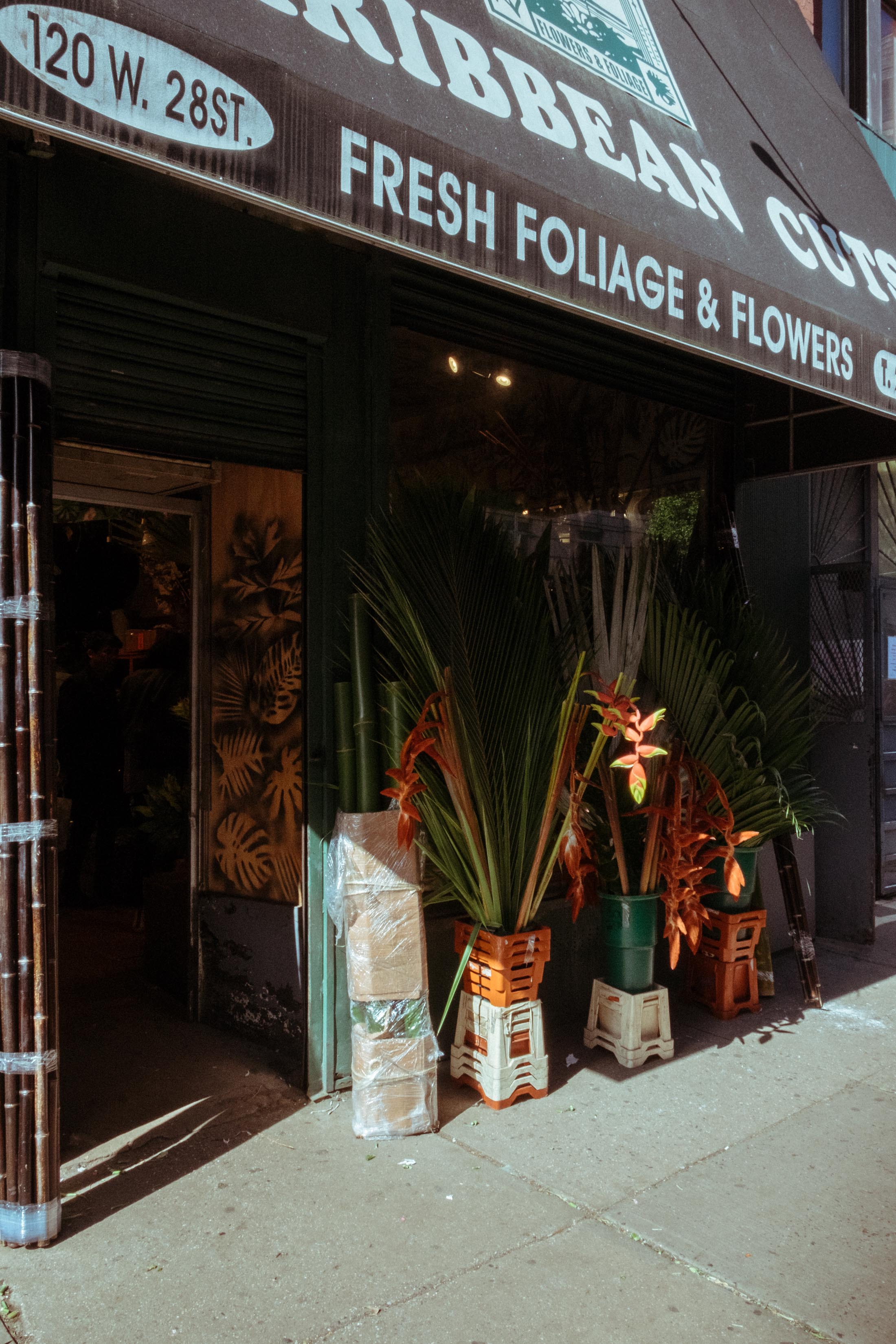
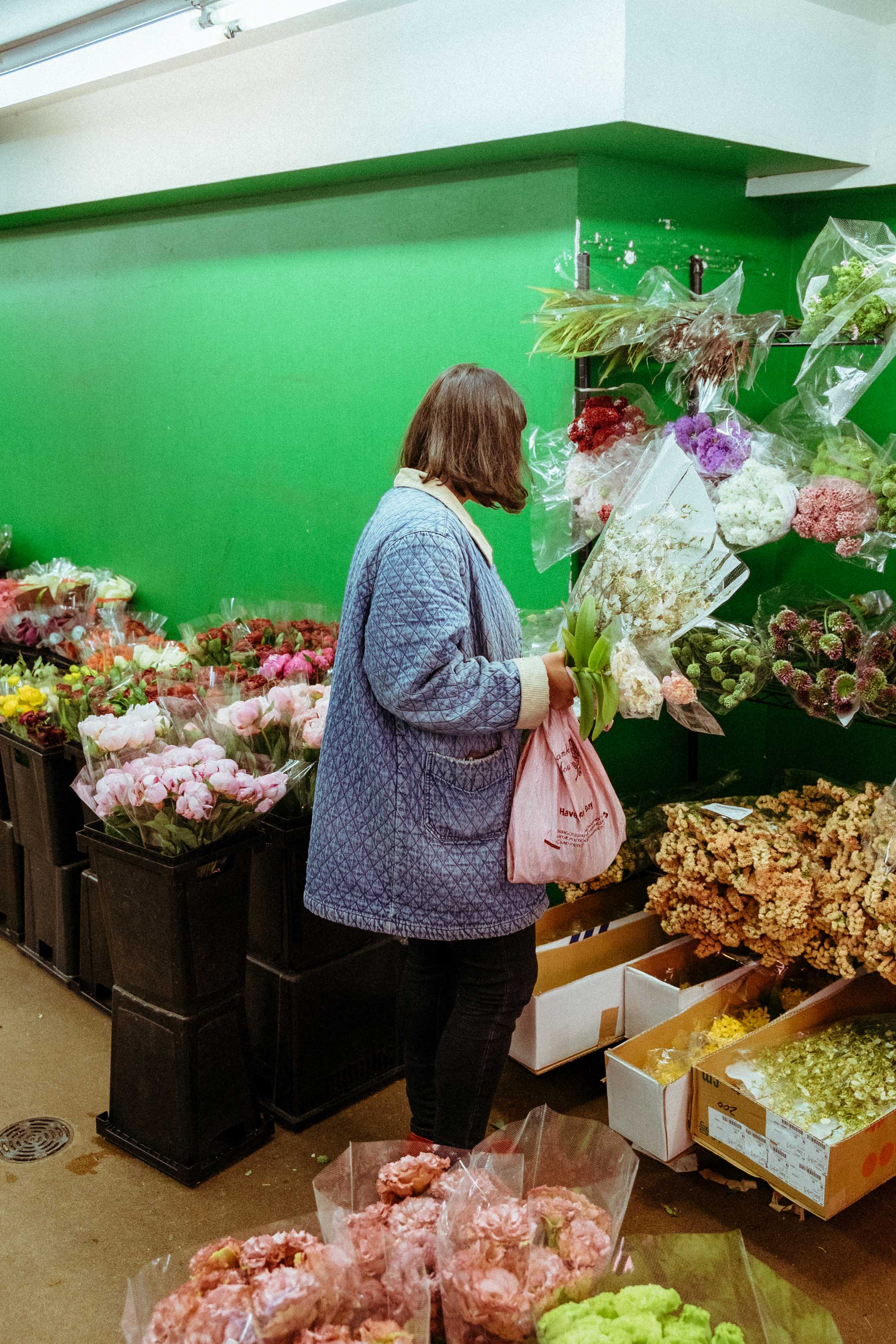
But you rarely ever use any greenery anymore, any foliage. So, how do you begin?
I think I have a vision in mind before I start creating of what I want it to look like. For instance, it’s like sketching an orange. You see the orange in front of you and you go—just intuitively—“I’m going to start drawing here because this is how I see the orange”; I just go. I don’t actually give it much thought. I just try and feel it out, get acquainted with the materials that I’m working with and understand their relationship to each other, and then that relationship to the vase and the space. And me. And the client, you know? All these different relationships.
And how did you reach your current style?
So what happened was—it was a winter. And in the winter, greenery becomes really scarce. Like, interesting greenery. I started travelling to LA a bunch because I wanted to move there, potentially. I had been on the East Coast my whole life and I was like, “maybe it’s time for a change”. I’d gone out to LA and I was so—everything I loved material-wise, flower-wise, grew out there naturally. So I was like, “maybe this makes more sense”. I loved the colors out there, the lighting; everything just seemed prettier and easier. So, it really attracted me in a lot of ways. I had some good friends out there and I started going out there a lot. When I would come back to New York, I would try and recreate the experience that I was having in LA, so I started to use more tropical things. Also, what happened—very early on—was that I would get… People would say things to me like, “Anna Wintour hates tropical flowers. You cannot use them”. So things that I would love, I wasn’t allowed to even use. So then, because of the clientele that I was working with, I had to keep those things in mind. It was just so different than it is now. At a certain point, I was just like “fuck it!” I’m going to work with what I love. I’m not here to please one person, I’m here to please myself. So I started using anthurium a lot and the orchids. And, in the winter, also, I didn’t have access to these California roses that I love—and I love roses—and the only roses that I could get were these greenhouse-grown roses. I wanted to make them look more like a garden rose, so I started peeling back the petals. And I was getting such amazing feedback from it that I was like, “oh! I guess I’ll just keep going with this” and then it sort of took on a life of its own. And now I feel like its very much part of the brand. I never sought out to create a brand, it just happened. What’s amazing about the industry now is [that] there’s room for exploration and experimentation and there’s so many people doing interesting things; it was so much more conservative in its experimentation back in 2011, when I first started. You know, the edgy thing to do, or the crazy thing to do was to add, like, a black flower [laughs].
I’ve also heard that—it’s one of those rules that you break—that you should never mix tropical flowers with non-tropical flowers. Like a rose and an anthurium. But it looks so good! It doesn’t matter, none of that stuff matters.
None of that stuff matters. I guess it matters if you don’t know where to start; it’s like a helpful starting point if you need that little push in the right direction. For some people, that is what they vibe with and what they love so they just keep going on that. But for me, I grew up in a landscape where all of that was around me and I actually prefer it as it is in nature so I just wanted to explore something that I wouldn’t see in my backyard, you know?

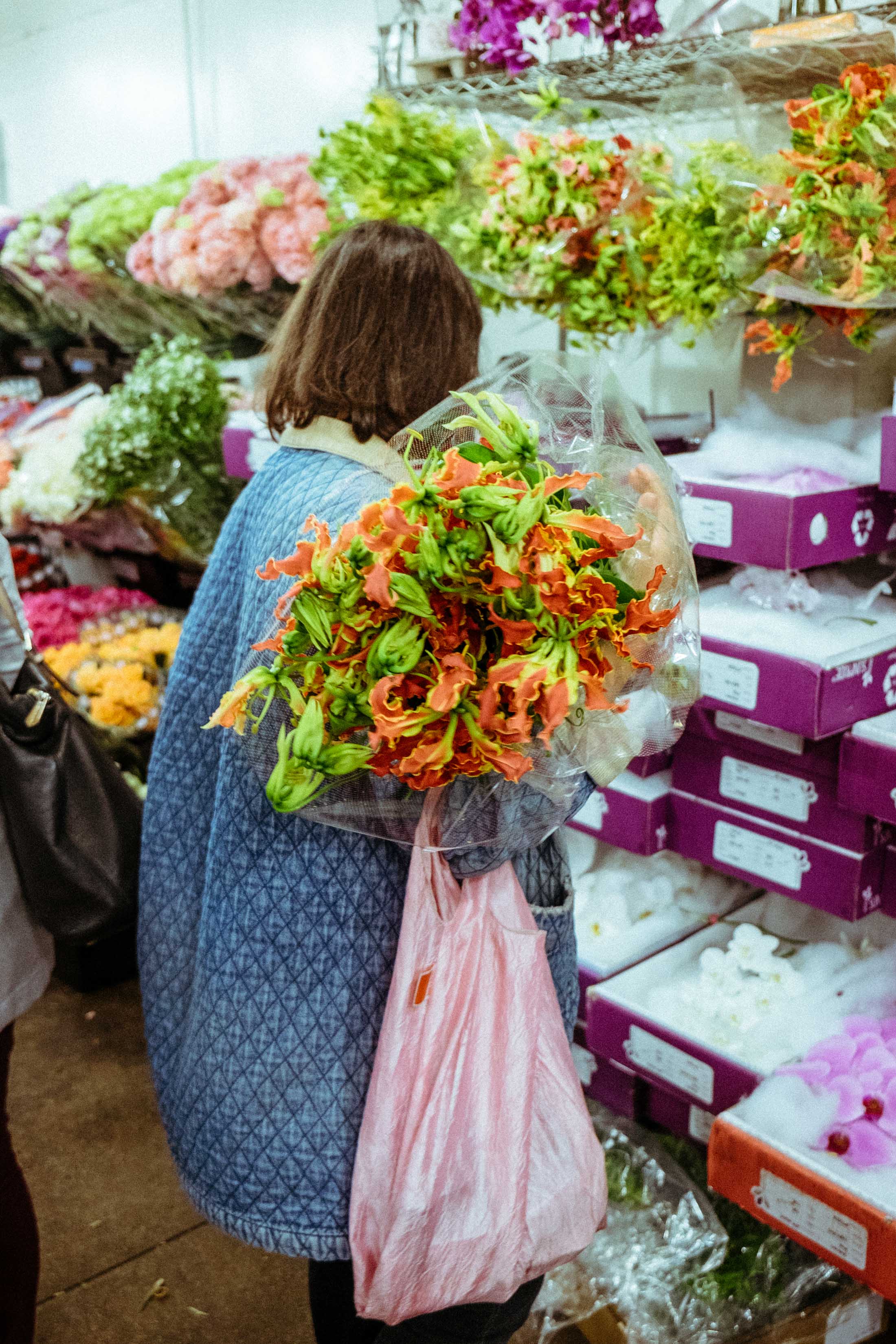
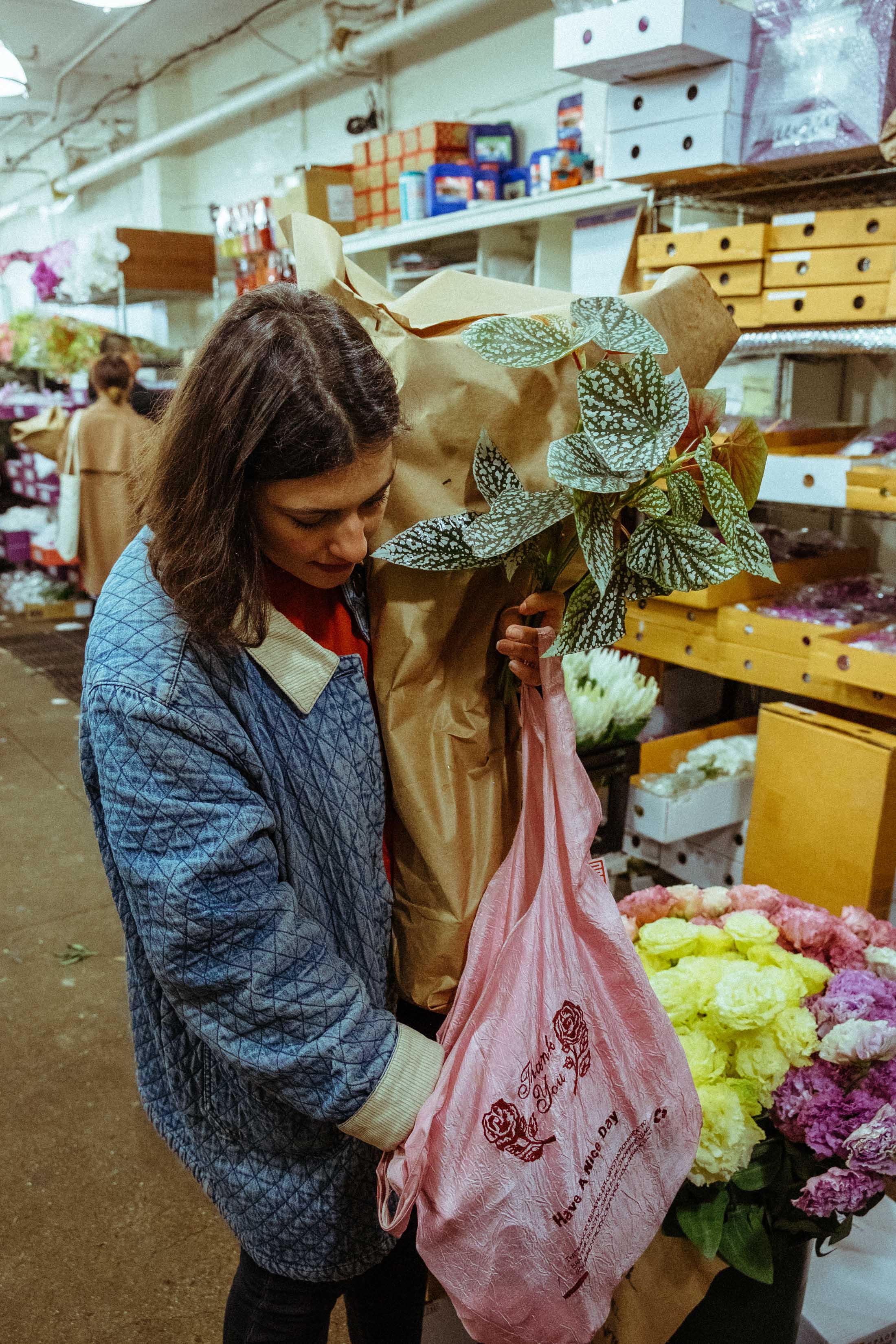
Is there anything that you purposefully avoid? Any of those rules, that you purposefully avoid or are you flexible?
I try to be conscious of other florists and the work that they’re doing, to not cross over. Because I think there’s like a handful of us that like a lot of the same things. That’s the only thing that I think I avoid, because there is so much subconscious influence too. I’ve also had really strange Zeitgeist moments where I make something and you see another florist on another part of the world has made almost an identical, same thing. Some things are just out in the ether. But I don’t actively—that’s like a happy accident. I wouldn’t want that to ever happen intentionally. Also, I like to use really fresh flowers and really high quality product. I have really expensive taste in that way.
So, no carnations, for example?
No, I love carnations! But I like fresh carnations. I’m really particular about product and how it’s packaged and handled. Because I want the client to receive them in the way that I send them, or even [in the way that I] have received them myself. I care a lot about the end result.
It can take a while to make it and to reach the point where you turn that corner and you’re finally able to chose the work you want to do or where people trust you and they don’t question the work you do. So, what was that moment for you and were there any challenges afterwards?
I don’t feel there’s a moment when you feel like you’re in the clear. I still try and get rest and take care of myself, and make sure that I’m getting just as much input as I am having output. That’s the only way that you can prevent burnout. I definitely am aware that, just because this is happening now doesn’t mean it’s going to be this way forever. I’ve evolved to this point and I think you have to continue to evolve. That will just naturally happen if you’re engaging in the world around you and open to new experiences and just paying attention to the world around you. But I guess maybe the moment was—you know, when a client reaches out, there are a lot of photo references that are sent, and I guess it was when they started to send me photos of my own work. And you just go like, “yes! Finally!” It feels like you ran a marathon and you just crossed the finish line! That was pretty cool. And I still get really giddy about that happening because it just feels good.
Is there a place you want to travel to just based on its flora?
100%. Japan and Australia. I just want to see those lotus flowers that are like as big as your torso [laughs]. And if you go at the right time you can see magnolia like that too. I think I’d lose my mind. You just don’t get exposed to that kind of stuff here so it’s just exciting. And I’m obsessed with Japanese product; their growing practices are so amazing and meticulous. The hybrids that are created [in Japan]; you just stand in awe. They’re so well designed, in a way. I’ve ended up using a lot of Japanese product. That’s just what I’m into right now. That’s what’s so amazing about working with flowers. You’re bringing people back to earth. That’s the philosophy that I started on and still believe in. If I can just get people to be exposed to all this amazing nature then their experience when they walk outside is going to be completely transformed.
That’s also really important, because you are in New York and this is such a rough city sometimes. There’s not a lot of nature. I’ve been to LA and it’s so different. You can just go to the beach any day. There are a lot of beautiful flowers all around…
Everywhere! There’s like passion fruits growing on fences [laughs]. I feel like my job is philanthropic [in a way]. It’s helping New Yorkers, you know? [laughs]. You’re helping them get through! Here: nature! Breathe it in!
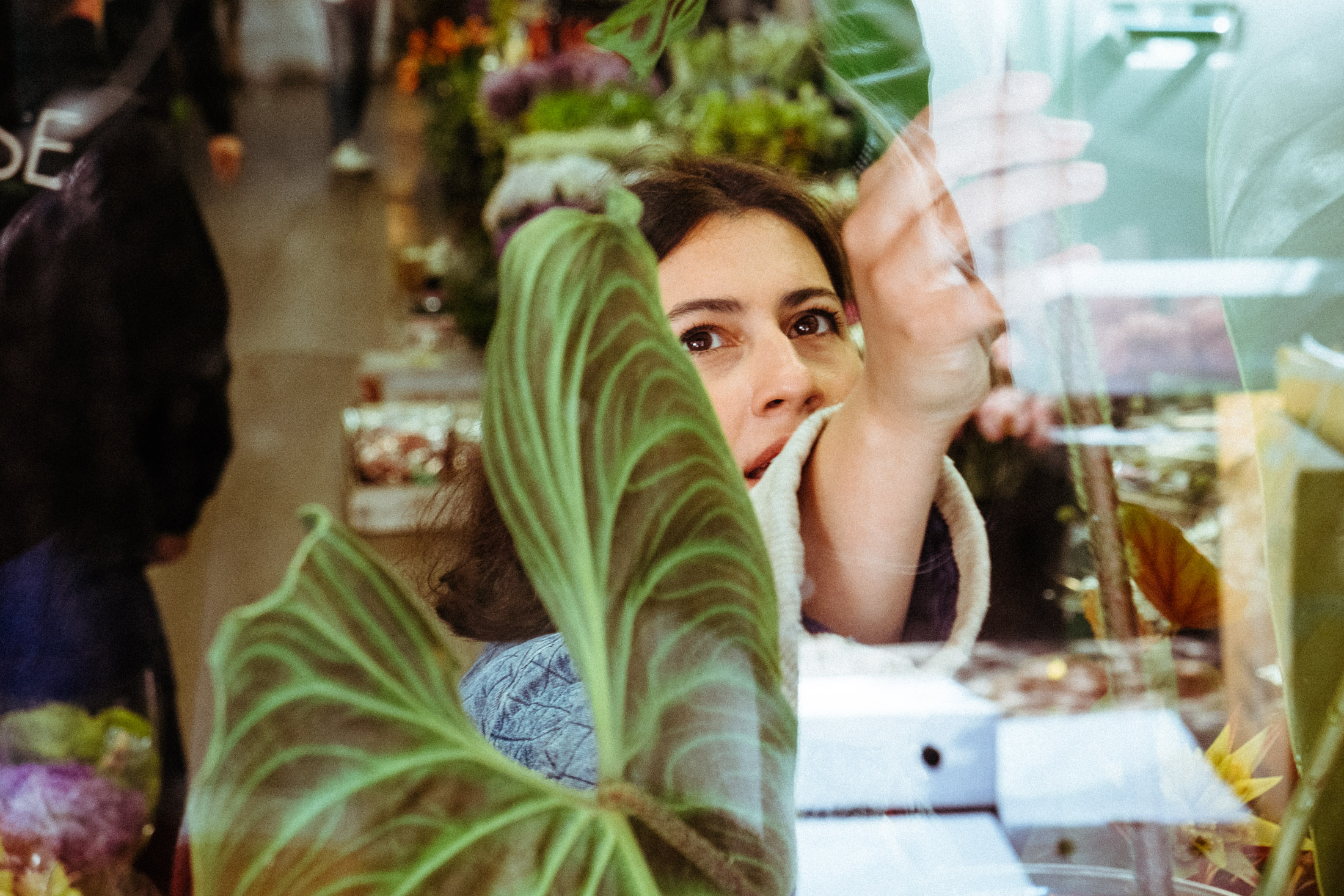
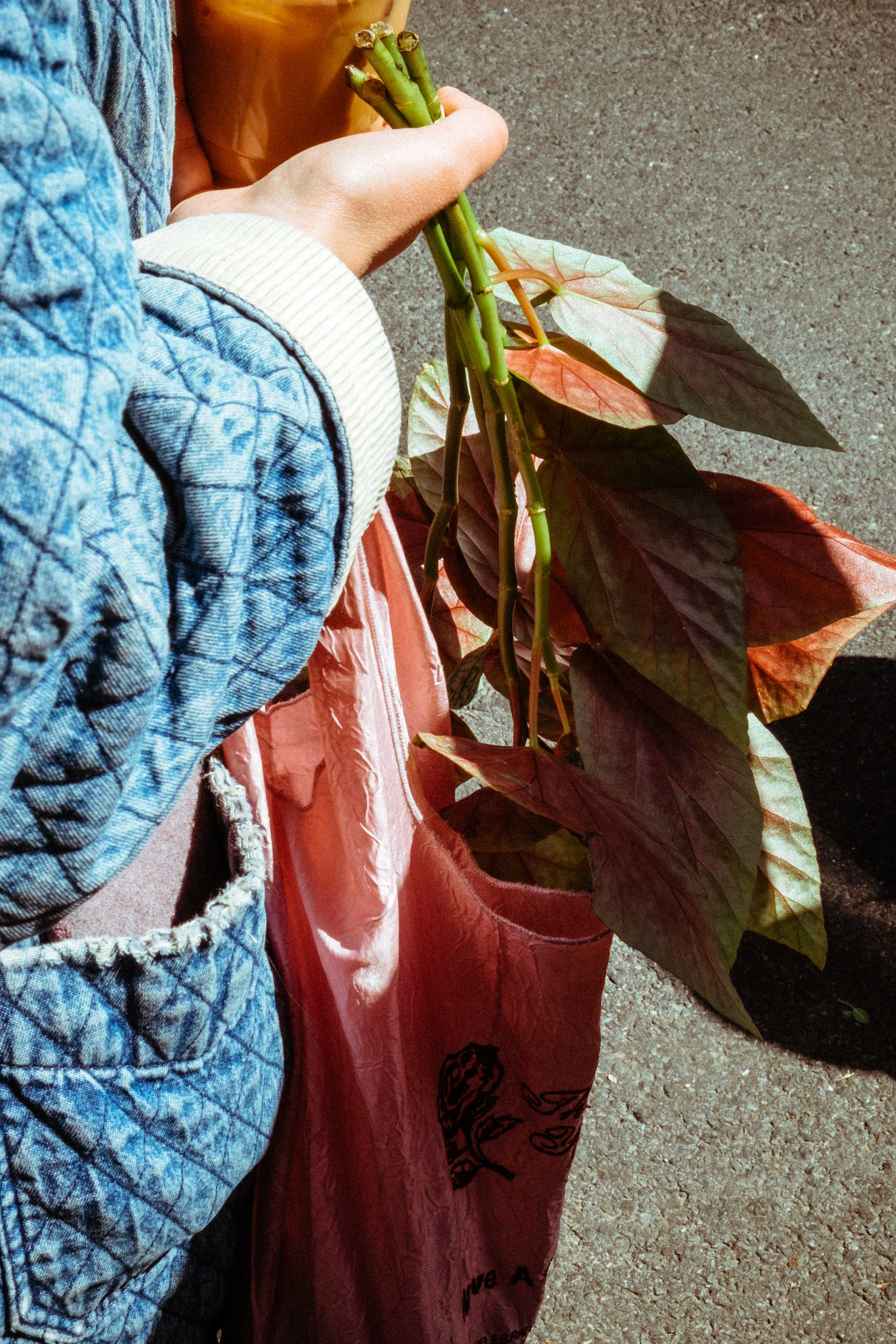
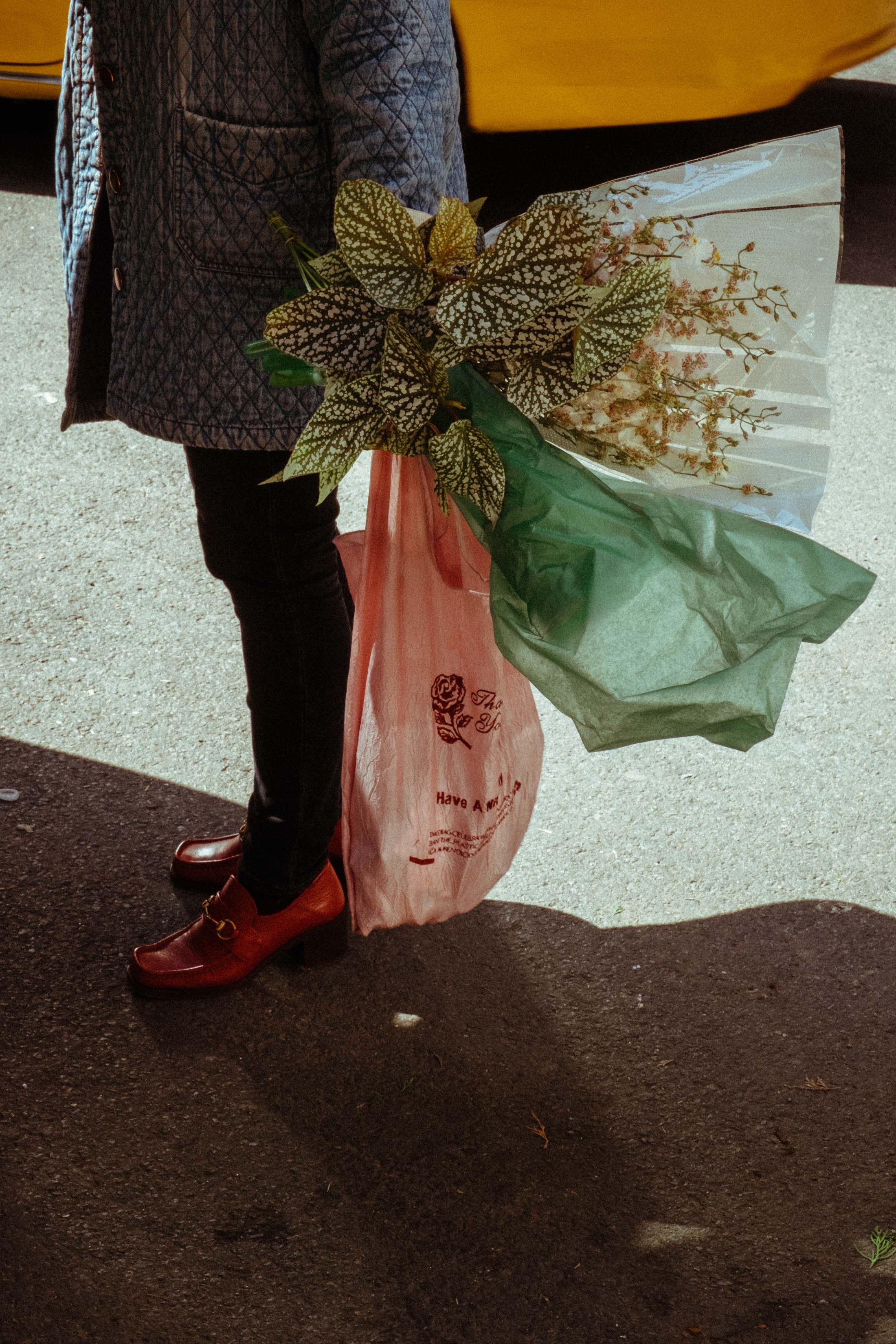

That’s also what art is, you know? When I go to a museum, I feel super inspired and alive. It’s the same thing; if I could wake up to one of your arrangements every day in my home I would probably feel the same. And I live in the tropics, and I [still] go on [Instagram] to see your flowers, a lot. Because they’re so cloudy and relaxing to look at.
That’s so nice! I love to hear that it relaxes someone. It’s such a stressful world.
Yeah. That’s why it’s interesting to hear that California played a part in how you reached your current aesthetic, because it’s bringing a little bit of that sunshine and happiness to this city.
There’s another element too. I think my personal life—as my personal life changed, my work changed. When I first started working with flowers I was in this very serious, domestic relationship and just playing house. Wanting to sort of curate this beautiful, little idyllic life with maybe a farm, or something. And then, that relationship ended and I had to look at myself in a way that I hadn’t before. I had also lost my father four years prior to that. So it was this, like, “who am I? What do I like? What’s important to me in my life?” That too was hugely instrumental in, not only a shift in my mentality, but also a shift in my work. Sometimes I’ll go back and look, and I can see when that moment happened. It started out of angst and then progressed into—it’s almost like you can witness the stages of grief. That was a huge part of things, and nothing that people really know. But your interpersonal relationships are hugely instrumental in the way you see the world.
I think that your process and your emotional involvement is the same as that of an artist. I feel like a designer is not emotionally involved.
I’ve had this conversation before. So, yes, maybe that’s the profession that I identify with the most but then flowers are not yet really a respected art form, you know? There have been artists that have incorporated flowers into their exhibitions but to have a florist be like, “I’m an artist”; everyone sort of rolls their eyes. I have conceptual projects that I want to put into place but it takes time. And I’m also in no rush with that but there are definitely other things I want to do besides events.
Do you enjoy any one application of your work more than another? Weddings, events, deliveries?
My favorite is when I’m making an installation for myself and there’s no client or brand attached. It’s the most liberating thing. That’s the goal. But I want to keep Brrch going. So I align myself with clients that like what I do and then that gap is not so wide. It still feels like I can create something for myself. I often do, but with them in mind.

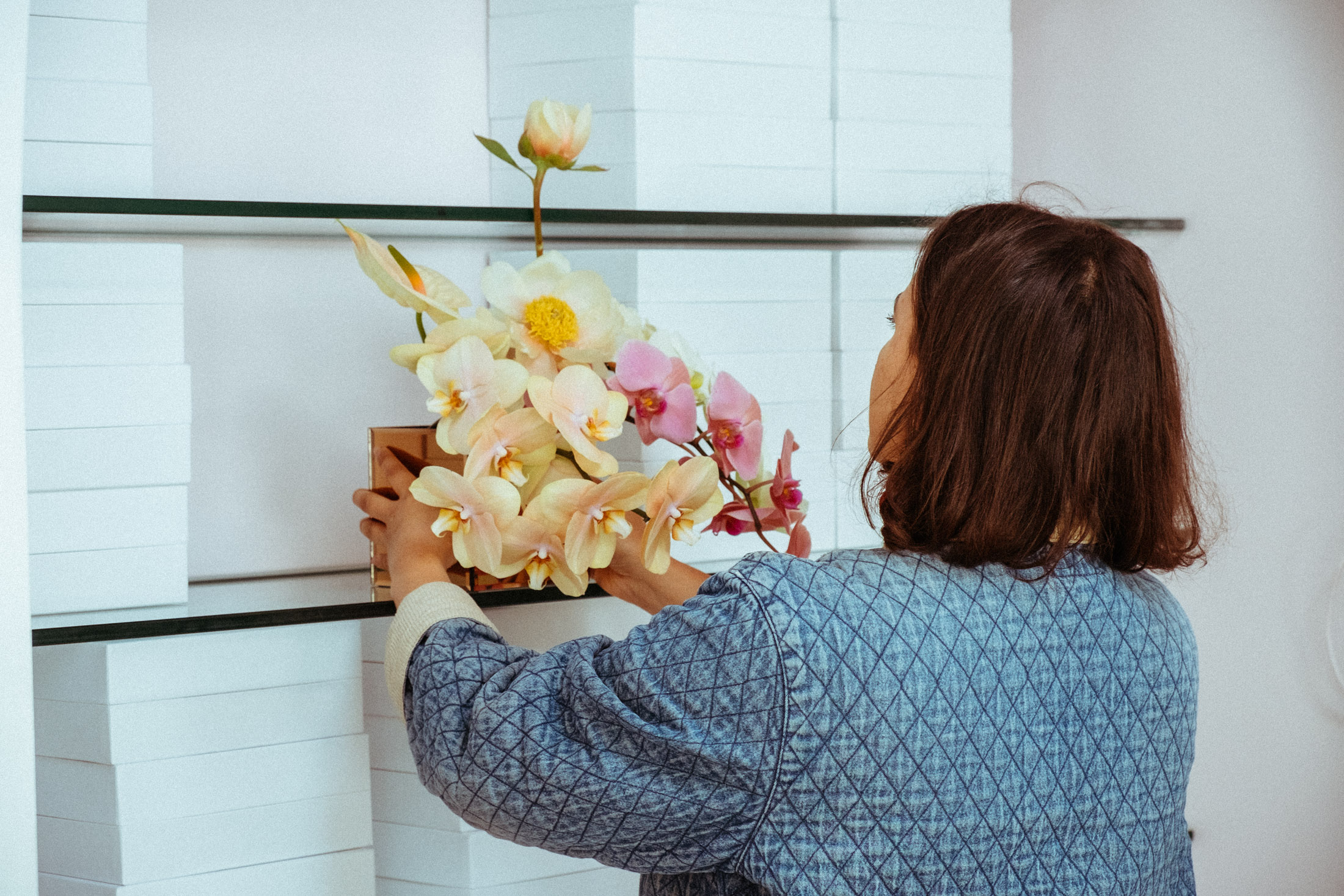
A flower you never get tired of?
I think anthurium! I’m so obsessed with them. They’re so weird. And the colors that they come in are so unusual. When I was in London, I was exposed to all of these different varieties that we don’t even get here. And orchids. I really love orchids. I was made fun of for using them in the beginning, because they’re so phallic. But then I actually get off on making people uncomfortable [laughs]. Because I think what it really means is that people aren’t necessarily comfortable with their sexuality. I just want people to own that more. We’re humans, we’re sexual beings. Why does this flower make you uncomfortable? It’s beautiful! Just embrace it.
Most common non-floral source of happiness and inspiration?
Film. I’d like to direct, actually, at some point. I’m absolutely in love with movies and film.
I read that you have a background in theatre.
And dance, and acting. I thought that that’s what I was going to do and then this thing happened in High School where I told my parents I wanted to be an actress, specifically for film because I loved them so much, as art pieces. And they were like, “do you know the statistics of how many actors work? If you can prove to us that you can make money, we’ll let you study it”. So I went and got a manager and I booked a commercial on my first audition. It was like my Junior year of High School and I was working, professionally. They couldn’t say anything anymore. Then I had this other transition and growth period where I realized that I didn’t want to be reciting other people’s lines and songs, I wanted to write my own. And that’s why I went to music school. I’ve lived many lives prior to this one! [laughs].
What instrument did you play?
Well, I was singing. I’ve done that my whole life. Then I was writing. I’m just a generally very curious person. And even when I was doing that, I was thinking maybe I’d do A&R or music supervision.
What’s A&R?
It’s the part of the [music] label that finds new talent. So their job is like going to concerts and scouting talent. I thought that maybe I’d be good at that or music supervision which is sound tracking television and movies. I love putting together a playlist, so I thought maybe I’d be good at that. I’ve just always liked to surround myself with musicians. To me, those are like “my people”. That’s why I love film, it literally combines everything that I love and everything that I’ve been trained to do in my life. So, to me, that’s the next step. We’ll see!
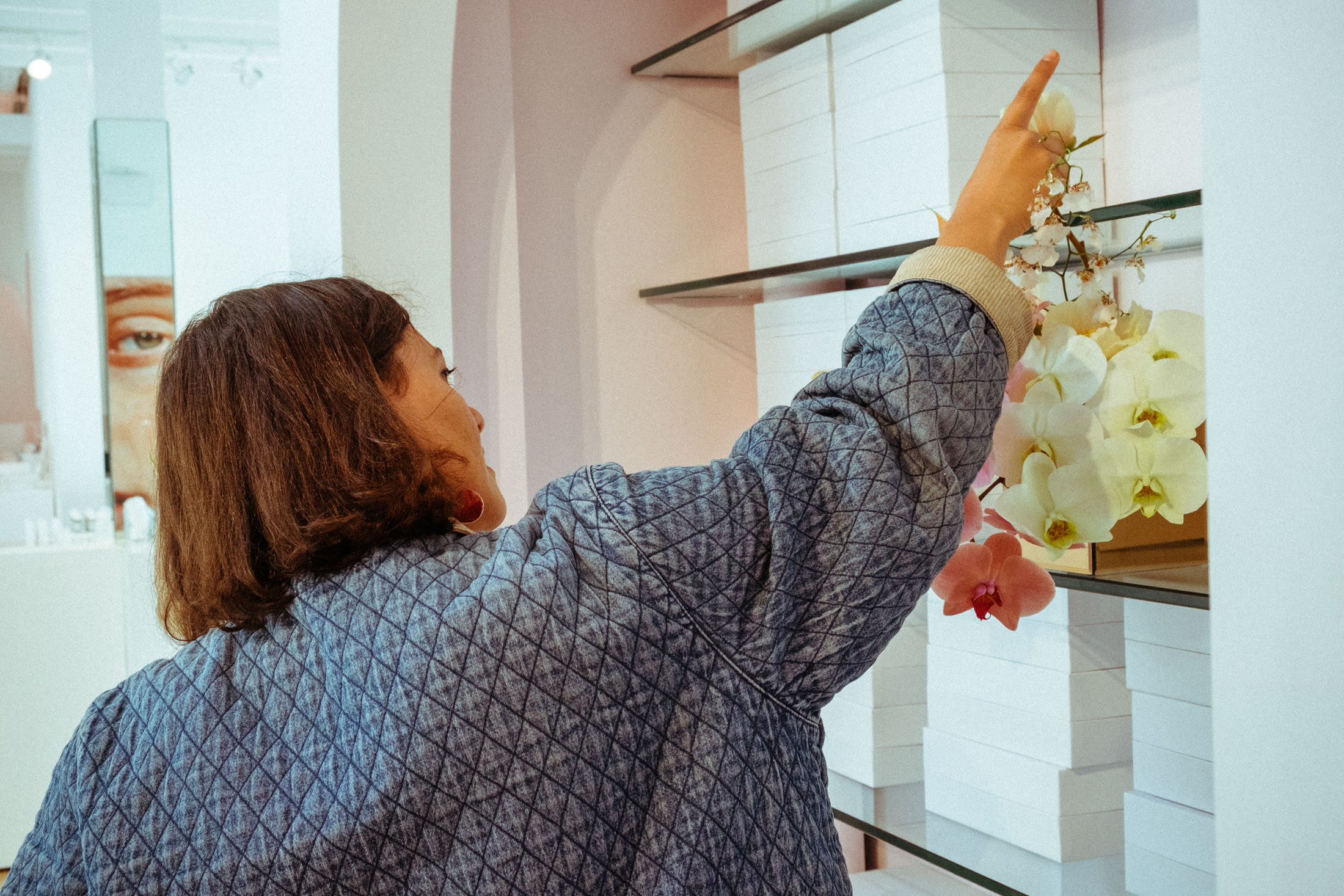
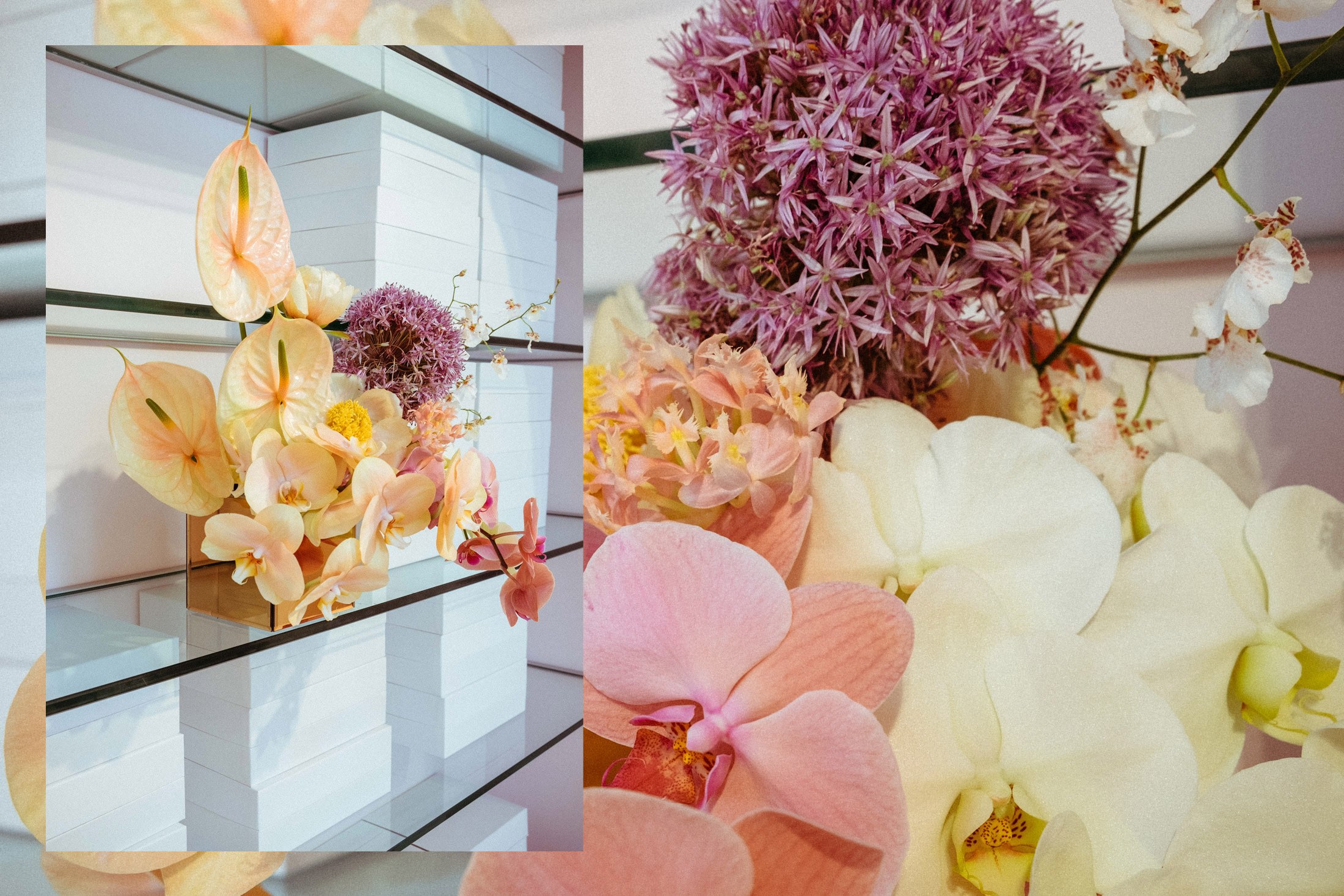

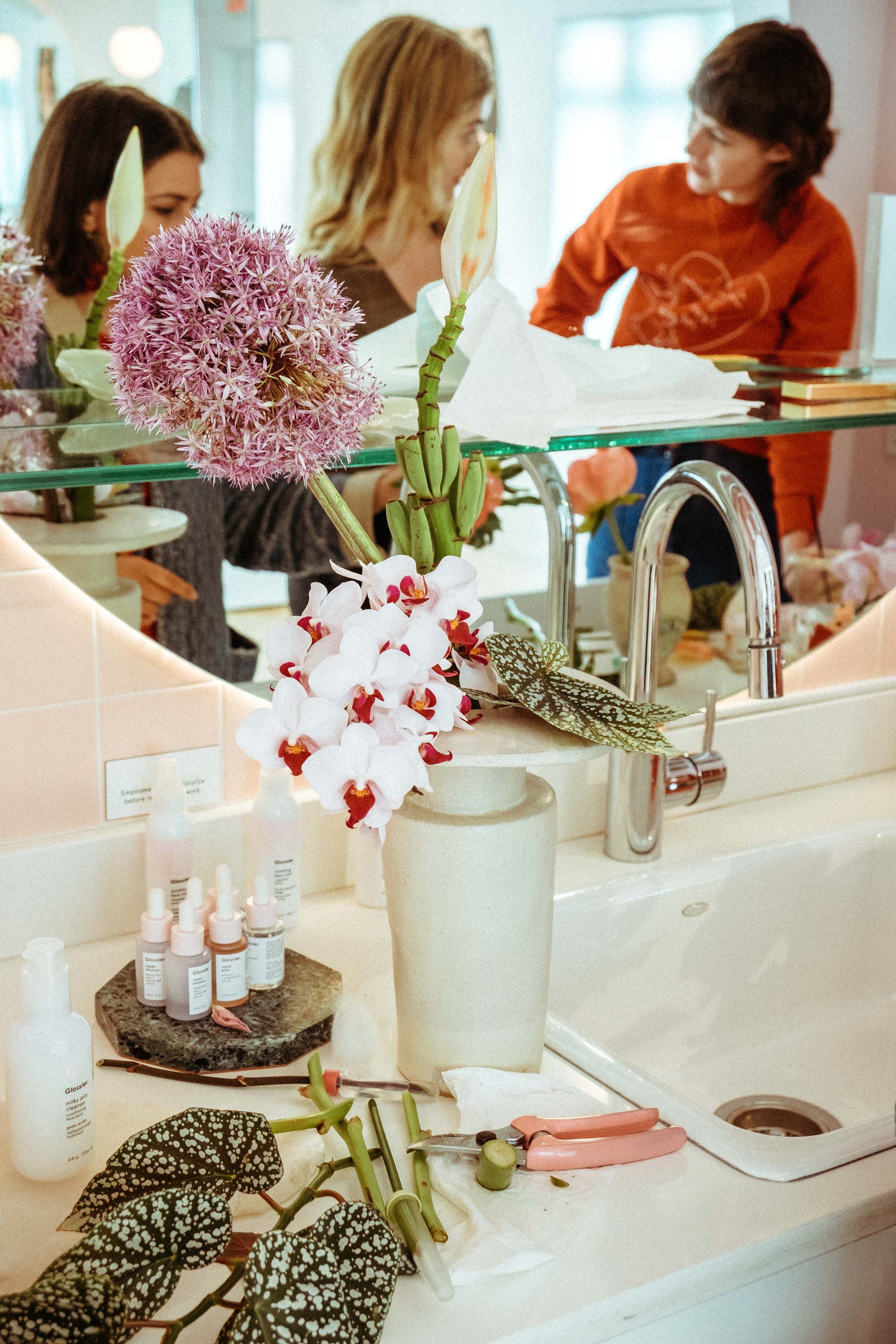
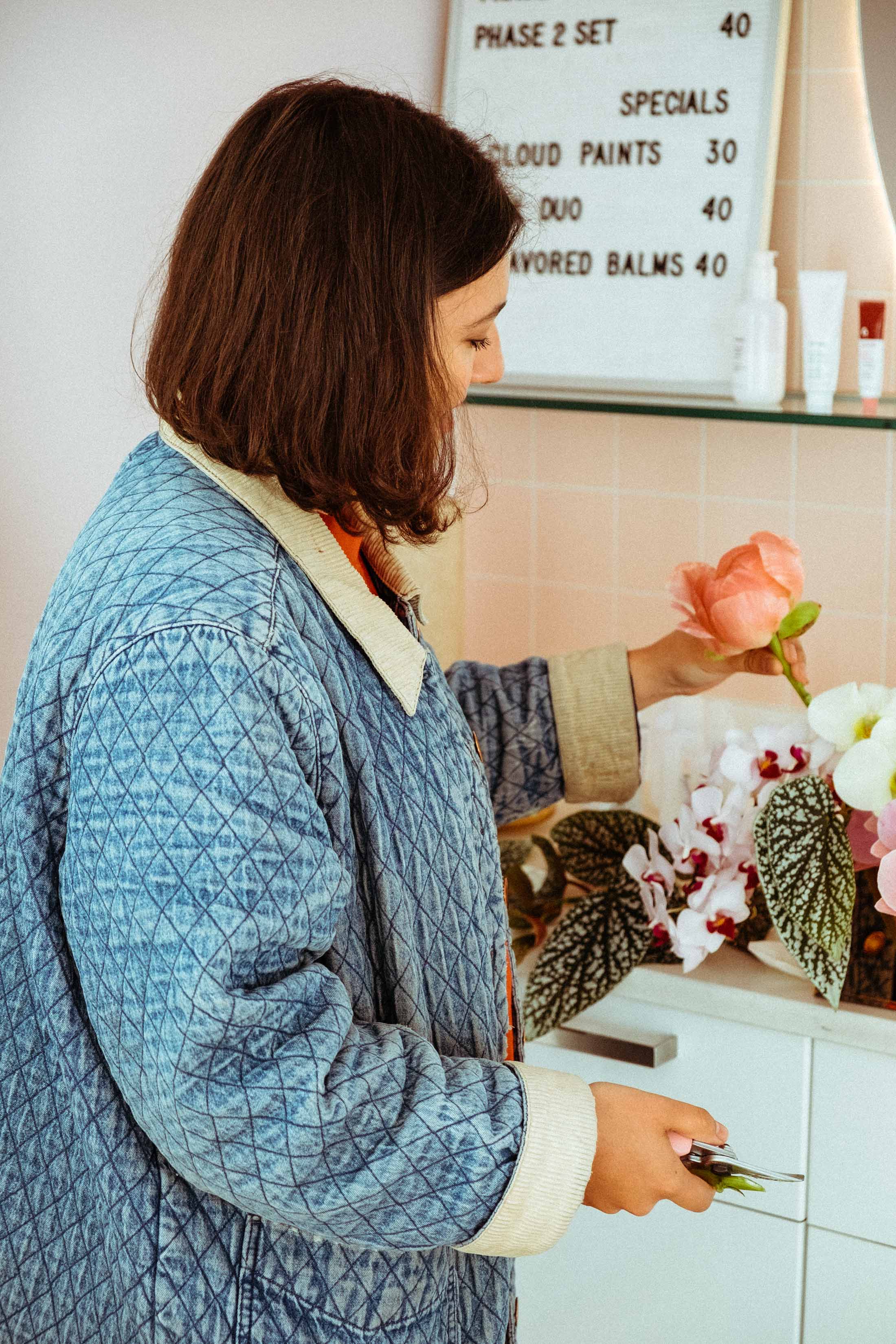
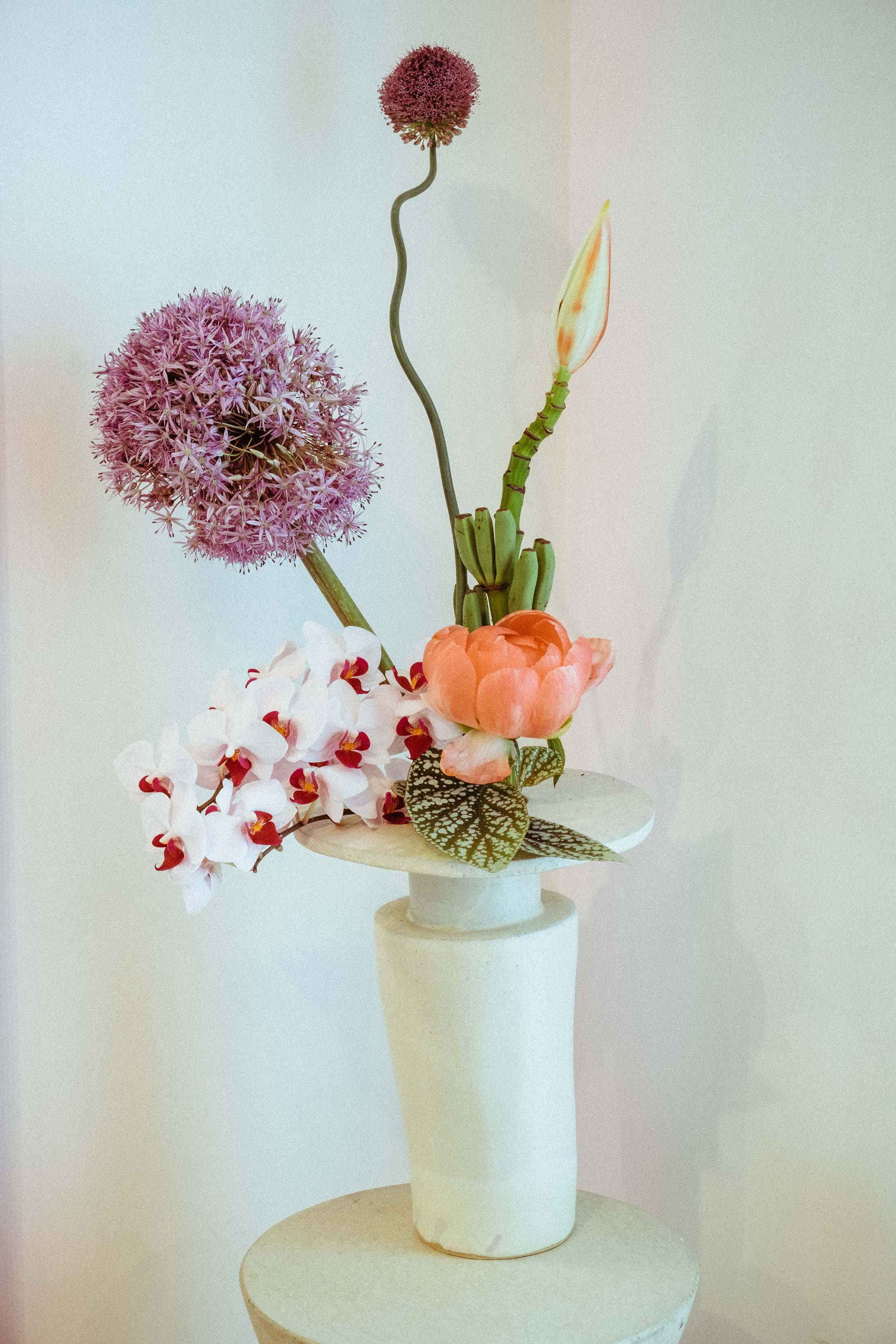
“That’s what’s so amazing about working with flowers. You’re bringing people back to earth. That’s the philosophy that I started on and still believe in.”
—Brittany Asch

